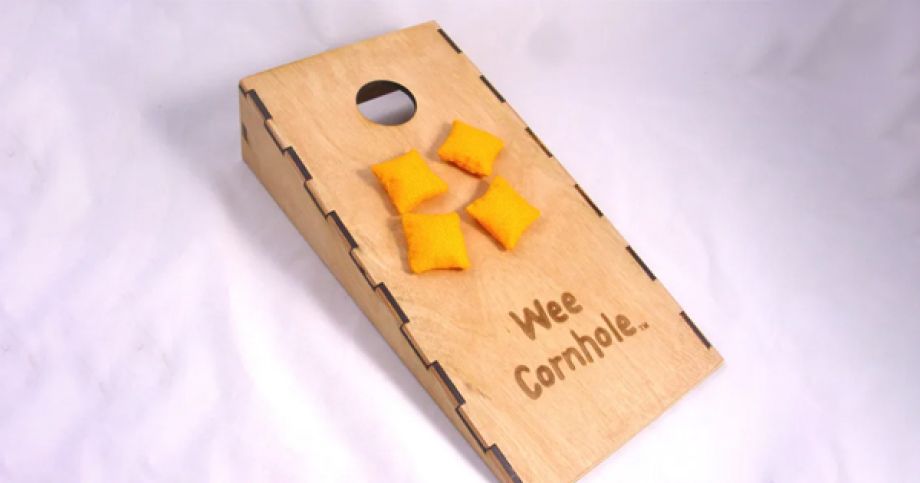
COOLaserCraft
Research, planning and persistence pave the way for a successful laser business
In 2006 Jim Puentes, owner of COOLaserCraft, read an article about laser engraving and cutting systems in a woodworking magazine. Little did he know that one article would start him on the path to becoming a successful entrepreneur, specializing in custom laser projects.
“When I first started out, there were several early projects that I turned down because of lack of expertise, or confidence, or both, that I’d do in a heartbeat now.”
Jim Puentes, owner, COOLaserCraft
“A couple of years before I planned to retire, I’d read an interesting article in one of my woodworking magazines,” Jim explained. “It was basically about using a laser, or finding a local laser operator, to make repetitive cuts or layouts for complex mouldings. That was the spark that started me down this road.”
At the time, Jim was new to the engraving industry, so he did a significant amount of research and attended an Epilog clinic before deciding a laser business was right for him.
“I began learning CorelDraw, went through a small business certification program at a local community college and developed a business plan,” Jim said. “Only then did I start looking for a machine. It took me over a year to find what I wanted – enough power to do metal marking with a big enough bed to fit some of the materials I had in mind.”
In the end, Jim worked with Epilog Laser distributors at Fairway Laser Systems to purchase a Legend 36EXT from Epilog.
Jim tells us that his original business plan focused on providing custom materials for the homebuilding and remodeling industry: tile, flooring, mouldings and landscaping material. He decided early on that he would concentrate on this type of service work instead of retail and not compete with the trophy and awards vendors in his area.
“I wanted to work out of my shop and did not want to stock material,” Jim explained. “I had a couple of partners lined up and was ready to go…..until they pulled out.
So it was on to plan B,” he continued. “I beat the streets and got contracts with several framing companies, cutting, rastering and inlaying matboard, as well as rastering glass and wood frames. I was lucky enough to find a couple of local companies that bid on mechanic tool sets for the military; tools that must be marked with a control number. Through those contacts, I secured more work from a local tool manufacturer.“
After taking the time and making the effort to secure a variety of clients, Jim tells us it was only within the last couple of years that he has seriously considered going into retail and he’s enjoying the additional work.
“Fabricating custom acrylic templates is currently my largest retail market,” Jim explained. “Very steady work and on par with metal marking with regards to income.”
We asked Jim what some of his more popular retail items were and he told us that cookbook stands, business card cases, cornhole board sets and his one-quarter scale Wee Cornhole sets were some of his best sellers.
“There is a tremendous amount of competition for all of these items, however the laser gives me an advantage when it comes to production, design and personalization,” Jim said.
As Jim’s business has grown, he told us that some of the retail items he makes have required him to come up with new processes, particularly the cornhole boards.
“I do that by rastering paint – it’s what makes my product unique in a very large and competitive market and allows me to compete against vinyl wraps. I even came up with an acronym for the process – color enhanced rastered paint on plywood (CERPOP).
One of the most memorable projects I did was a tournament-sized cornhole board set for Leader Dogs for the Blind. I had to design the boards and the bags for both visually-impaired and sighted people,” Jim said.
As for projects that weren’t so memorable, Jim told us he hasn’t run into any projects that he wouldn’t try again.
“When I first started out, there were several early projects that I turned down because of lack of expertise, or confidence, or both, that I’d do in a heartbeat now,” Jim said.
One of the most knowledgeable and helpful contributors on the Epilog Laser Fans page, we asked Jim what advice he had for those just entering the industry.
“For those just starting out, it’s important to find your sweet spot, your niche, and do it better, or at least differently, than anyone else,” Jim said. “Set aside time each week to try something new. Have a Plan B.”
As for what’s on tap for Jim, he sees growth potential in the metal-marking industry.
“There is a fairly large market for metal marking in my area, so I can see an Epilog FiberMark in my future.”





